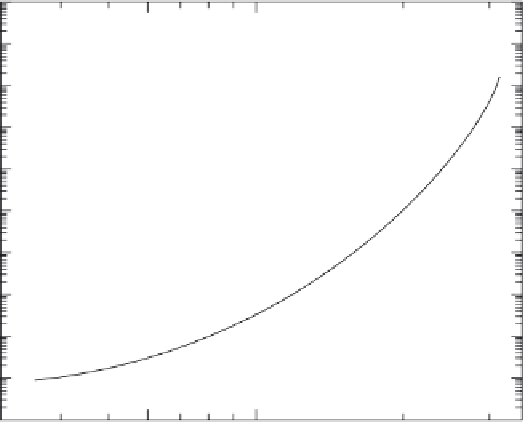Environmental Engineering Reference
In-Depth Information
10
-2
T
= 838K
10
-3
Power-law breakdown
10
-4
n
~ 12
10
-5
10
-6
10
-7
n
~ 4
10
-8
n
~ 1
10
-9
10
-10
10
-11
10
-12
30
60
100
σ
(MPa)
200
300
3.22
Experimental creep rates obtained in 0.5Cr-0.5Mo-0.25V steel
838 K. The solid line corresponds to the predictions of the
-
projection
concept and the plot shows the sound agreement between the
experimental and theoretical predictions.
92
θ
),
(
(
)
)
(
()
4
[3.53 ]
εθ
1
1
θ
−
θ
−
θ
θ
θ
1
θ
4
θ
−
−
2
θ
2
)
)
θ
θ
3
3
3
4
4
where
θ
1
scales the primary creep regime,
θ
2
is a rate parameter govern-
ing the curvature of the primary stage,
θ
3
scales the tertiary creep regime
and
4
is a rate parameter quantifying the shape of the tertiary curve. These
parameters are found to change with stress and temperature conditions and
accordingly infl uence a change in the shape of the creep curve. A determina-
tion of the stress and temperature dependencies of the
θ
parameters would
allow the prediction of long term creep properties. Furthermore Wilshire
counters the widely accepted view of transitions in creep mechanisms with
changing stress and temperature conditions. The creep characteristics of a
0.5Cr-0.5Mo-0.25V ferritic steel could thus be described by the
θ
-projection
over a wide range of stress values based on a single dislocation-based mech-
anism. However, as shown in Fig. 3.22, there are defi nite changes in stress
exponent values with changing stress. Wilshire argues that if different mech-
anisms operate in different stress and temperature regimes, data collected
in one mechanism regime should not be able to predict the creep behav-
ior in a different mechanism regime. Furthermore Wilshire contends that
the
θ
θ
-
projection approach can be utilized to quantify material behavior in





























Search WWH ::

Custom Search